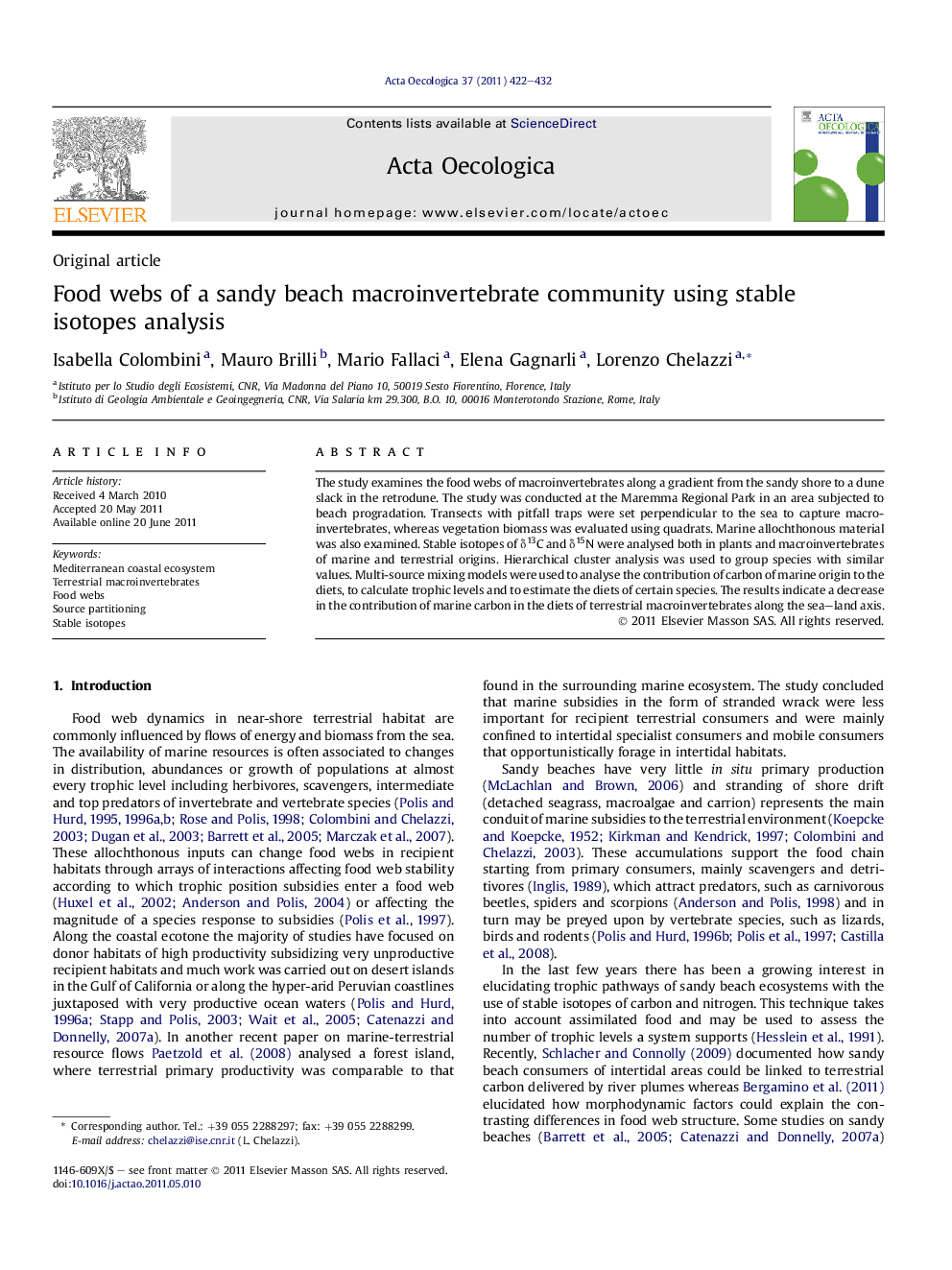| Article ID | Journal | Published Year | Pages | File Type |
|---|---|---|---|---|
| 4381365 | Acta Oecologica | 2011 | 11 Pages |
The study examines the food webs of macroinvertebrates along a gradient from the sandy shore to a dune slack in the retrodune. The study was conducted at the Maremma Regional Park in an area subjected to beach progradation. Transects with pitfall traps were set perpendicular to the sea to capture macroinvertebrates, whereas vegetation biomass was evaluated using quadrats. Marine allochthonous material was also examined. Stable isotopes of δ13C and δ15N were analysed both in plants and macroinvertebrates of marine and terrestrial origins. Hierarchical cluster analysis was used to group species with similar values. Multi-source mixing models were used to analyse the contribution of carbon of marine origin to the diets, to calculate trophic levels and to estimate the diets of certain species. The results indicate a decrease in the contribution of marine carbon in the diets of terrestrial macroinvertebrates along the sea–land axis.
► Trophic webs of macroinvertebrates on a sandy beach-dune slack gradient were monitored. ► 13C and 15N were analysed in marine and terrestrial plants and macroinvertebrates. ► 13C values of macroinvertebrates decreased at increasing distance from the sea. ► Marine items subsidise beach species and contribute little to terrestrial food webs. ► Taxa at higher trophic levels consume prey from multiple food web compartments.
